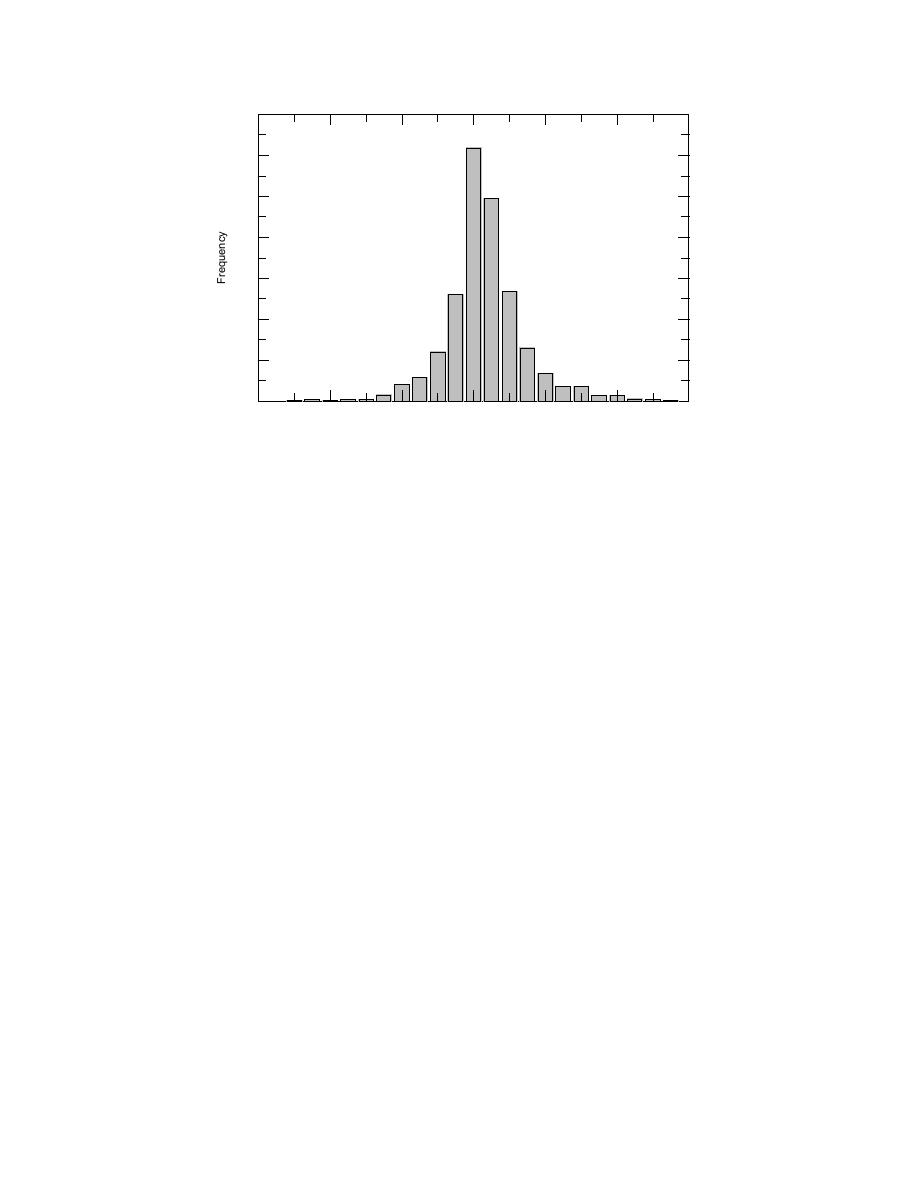
700
600
500
400
300
200
100
0
0.3
0.2
0.1 0.05
0.05 0.1
0.2
0.3
0
Discrepancy Between Logarithms of Published and Projected Streamflow
Figure 12. Distribution of discrepancies between logarithms of published and pro-
jected streamflow during selected ice-affected periods at Platte River at North
Bend, Nebraska, gage from 1965 through 1994.
sponding stages during open-water conditions. In addition, ice effects create uncertainty in real-
time streamflow estimates that are needed to help control floods and facilitate navigation.
Three dynamic modes of ice effects were identified on the basis of historical interpretations of
ice-affected streamflow records. In the first mode come rapid changes in ice effects, associated with
ice formation and ablation, indicated by abrupt changes in apparent streamflow. In the second
mode, existing ice effects change with changes in air temperature. In the third mode, ice effects are
eliminated with higher air temperatures. Equations for these dynamic modes were developed
within a discrete-time extended Kalman filter to project daily values and uncertainties of ice-
affected streamflow.
The filter consists of two models: a nonlinear process model and a time-varying linear measure-
ment model. For the dominant mode 2 dynamics, the process model computes the ratio of actual to
apparent flow (streamflow ratio) by use of a first-order difference equation driven by daily air-
temperature values and four filter parameters. During periods of mode 1 or mode 3 dynamics, the
difference equation is replaced by an algebraic expression to estimate the streamflow ratio by use of
five threshold parameters.
The measurement model projects a daily mean streamflow on the basis of the estimated stream-
flow ratio and the apparent streamflow. On days of direct measurement, the projection is computed
and the covariance matrix is updated to account for this information. The utility of the filter was
evaluated by applying it to historical data from two long-term stream-gaging stations.
The filters developed for stream-gaging stations on the St. John River at Dickey, Maine, and the
Platte River at North Bend, Nebraska, were stable, and parameters converged for both stations,
allowing projections of ice-affected streamflows. Results for the gaging station at the St. John River
indicate that, during periods of ice effects, logarithms of projected streamflow values were within
8% of the logarithms of published values 87.2% of the time and within 15%, 96.6% of the time.
Results for the gaging station at the Platte River indicate that logarithms of projected streamflow
values were within 8% of the logarithms of published daily values 90.7% of the time and within
15%, 97.7% of the time. The correlations between temporal updates and published values of stream-
flow on days of direct measurement are 0.777 and 0.998, for data from the St. John River, and 0.864
15



 Previous Page
Previous Page
